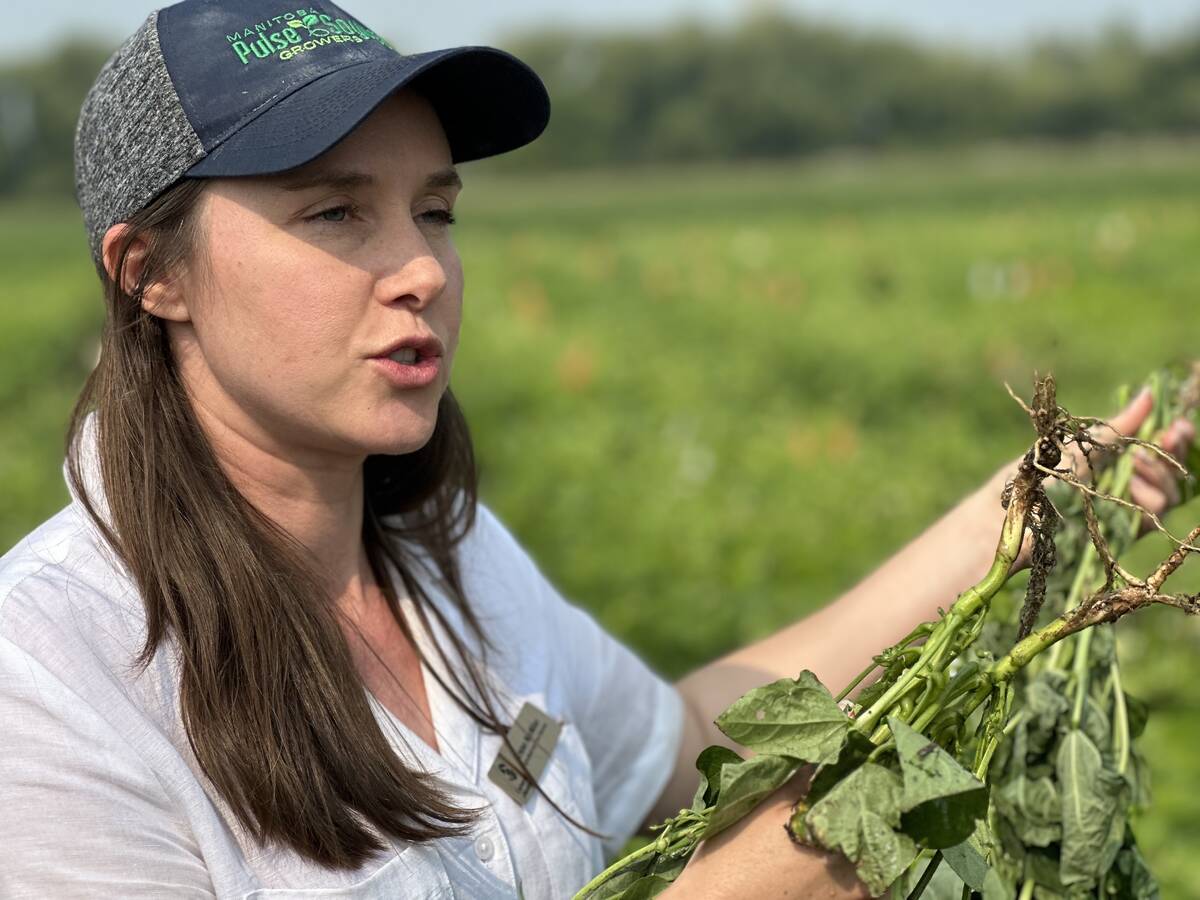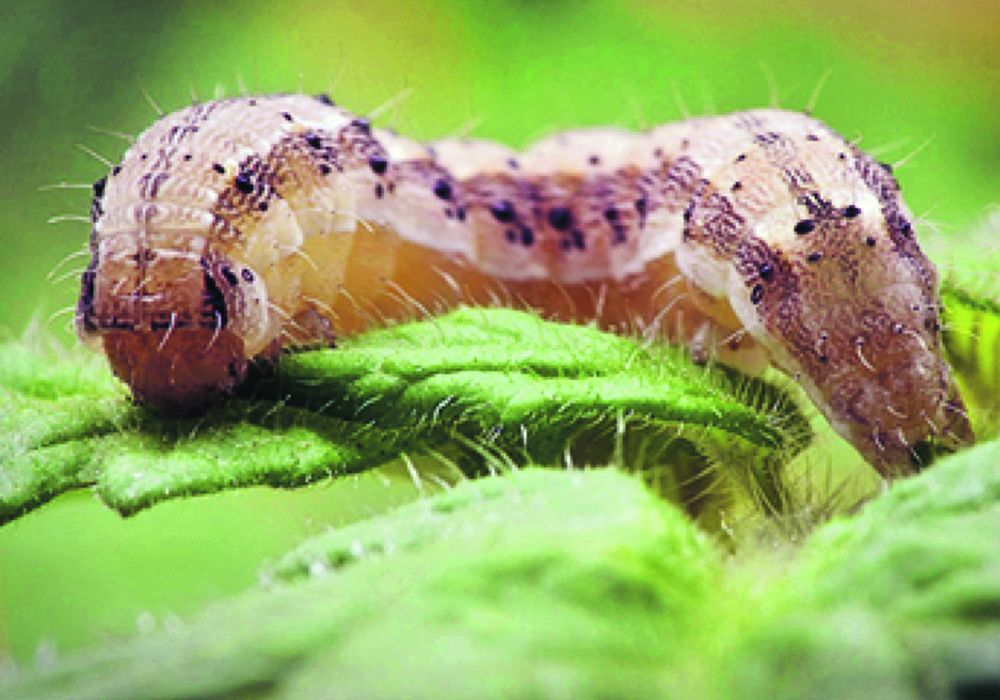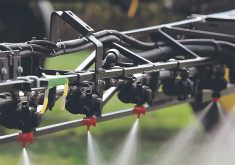A pest uses a salivary enzyme to shut down plants’ ability to emit an airborne substance that attracts the pest’s predators
Researchers at Pennsylvania State University have discovered a strategy used by tomato fruitworm caterpillars to stop the release of airborne plant defences by directly manipulating a plant’s stomata.
Stomata are tiny pores on plant leaves. They open and close to allow for the intake of carbon dioxide and release of oxygen and act as gateways that link internal plant tissues to the atmosphere. Importantly, they release defensive emissions called herbivore-induced plant volatiles (HIPV). Volatiles are chemical elements that readily vaporize.
When an insect feeds on a plant, HIPVs are released to protect the plant by attracting natural enemies of the harmful herbivores and by alerting neighbouring plants of the herbivores nearby.
Read Also

Lower nitrogen rates in dry beans could pay off for farmers
Manitoba research is testing whether reduced nitrogen fertilizer in dry beans can maintain yields while cutting costs and lowering greenhouse gas emissions.
Researchers at Penn State have discovered that a particular salivary enzyme called glucose oxidase (GOX) in the tomato fruitworm caterpillar has the ability to close the plant’s stomata and prevent the release of HIPVs, allowing it to chew unhindered on leaves.
“My lab has been working on this for quite a while,” said Gary Felton, professor and head of the department of entomology.
“My PhD student Po-An Lin pursued several leads to understand the function of this enzyme. The caterpillars produce a lot of salivary protein and he was particularly interested in how herbivory and drought affect plants. Plant pores, or stomata, play an important role in regulating water loss. The response of the plant stomata to caterpillar feeding is what provided the lead to follow.”
He said that stomata maintain some control over the release of plant volatiles, such as green leaf volatiles. The finding that stomata close in response to caterpillar feeding led to the researchers focusing on the HIPVs.
“The HIPVs and green leaf volatiles in particular are reliable clues that natural enemies and parasitoids use to locate their hosts, the caterpillars,” he said. “Neighbouring plants can also eavesdrop on these volatiles and prime their defences against herbivores.”
According to the news release, the researchers used CRISPR/Cas9, a computer technique for editing genomes, to produce caterpillars that did not have the GOX enzyme. They fitted separate glass chambers with filter traps to collect HIPVs. Caterpillars with the non-functional enzyme as well as those that had not been manipulated by CRISPR fed on tomato, soybean and cotton plants for three hours.
The team, made up of experts in molecular biology, chemical ecology, plant physiology and entomology, examined the response of the stomata to GOX under a microscope and measured the sizes of the openings. They extracted the volatile compounds from the filter traps and used gas chromatography and mass spectrometry to identify and quantify the HIPVs.
This led to the discovery that GOX inhibits the emission of several HIPVs during feeding including (Z)-3-hexenol, (Z)-jasmone and (Z)-3-hexenyl acetate, all important airborne signals in plant defences.
“This study is the first to use CRISPR/Cas9-mediated gene editing to study the function of an insect salivary enzyme,” said Po-An Lin, lead author of the research paper. “Using pharmacological, molecular and physiological approaches, we were able to show that this salivary enzyme plays a key role in insect-induced stomatal closure and likely the reduction of several important defensive emissions.”
In addition, Felton said that the GOX enzyme plays a role as an antimicrobial agent and that, from an evolutionary perspective, it is possible that there was strong selection pressure on this trait when feeding on a variety of host plants.
“I am still intrigued as to why this caterpillar produces so much of it (the enzyme), far more than most caterpillar species,” he said.
The research showed that the GOX enzyme had an ability to not only close stomata rapidly, within five minutes, but keep the pores closed for 48 hours to the detriment of a plant’s self-regulating temperature abilities.
“Besides interfering with the plant’s ‘cry for help’, stomatal closure could interfere with the plant’s ability to tolerate heat stress. Stomatal closure can cause increases in leaf temperature, making the plant more susceptible to heat.”
A curious observation made during the study was that caterpillars could shut down the stomata of tomato and soybeans but not cotton plants. Felton suggested that there could be some differences in the way that cotton plants regulate stomatal closure so that they are not sensitive to the GOX enzyme.
“There could be higher levels of antioxidants in cotton that would degrade the peroxide produced by GOX,” he said. “This is speculation, but we definitely want to understand the reasons for the differences.”
Using these research results for practical on-farm applications may require finding plant cultivars that do not respond to GOX. He said that the fact that researchers did not see cotton plants respond during the experimental phase suggests there could be an approach to plant breeding to develop new, insensitive cultivars.
Felton next plans to explore whether the ability of the tomato fruitworm caterpillar to shut down stomata for its own benefit is unique. He said there are other caterpillars with GOX and his suspicion is that this ability may be common.
Felton said in the report that the results suggest that stomata play a more important role in plant-insect interactions than previously recognized.
“Changes in stomatal dynamics can have downstream impacts on plant development and defences that affect insect herbivores. Although the ecological and evolutionary importance of stomatal dynamics to herbivory and plant defence responses remains unknown at present, we believe future research could reveal the important roles for stomata in multiple aspects of plant-insect interactions.”
The research paper was published in New Phytologist.















